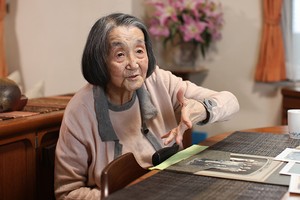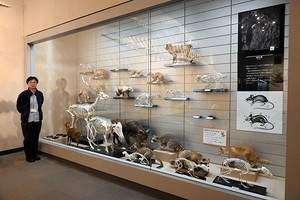THE ASAHI SHIMBUN
April 14, 2025 at 16:47 JST
KUMAMOTO—Memorial ceremonies were held throughout this prefecture in southern Japan on April 14 to remember the 278 people who died in Kumamoto and neighboring Oita prefectures in twin massive earthquakes nine years ago that struck days apart.
About 20 bereaved family members and others attended the ceremony held at the Kumamoto prefectural building.
A quake with an intensity of the maximum 7 on the Japanese scale was recorded in Kumamoto on April 14, 2016, and another of a similar intensity struck two days later.
That was the first time two quakes of that scale were recorded since observations began in Japan.
While 50 people died as a direct result of the quakes, another 228 were later classified as being disaster-related deaths, as people succumbed after their health deteriorated while at evacuation centers.
A man in his 40s and a woman in her 70s were classified as disaster-related deaths in July 2024 and March 2025, respectively, by the Kumamoto city government.
In response to a request from bereaved family members, the prefectural government for the first time this year set aside space where bereaved family members could share their sorrow with others in a similar circumstance.
Kumamoto Governor Takashi Kimura said it was hoped that the psychological burden borne by bereaved families could be lightened somewhat by opening up their feelings to others who suffered the same fate.
Kimura attended the first such meeting and he later said at the memorial ceremony, “We will continue to pass on the memories and lessons from the quake by never forgetting that what we have now is based on the many lives lost and the large sacrifices that were made.”
The town officials of Mashiki, where 45 residents perished, set up a table for flowers at the memorial park next to the town government building.
Flower offerings can be made until 5 p.m. on April 16.
A ceremony was held in Mifune, where 10 residents died, that included the unveiling of a “bell of reconstruction” at a public square.
(This article was written by Junki Watanabe and Ryutaro Ito.)




















A peek through the music industry’s curtain at the producers who harnessed social media to help their idols go global.
A series based on diplomatic documents declassified by Japan’s Foreign Ministry
Here is a collection of first-hand accounts by “hibakusha” atomic bomb survivors.
Cooking experts, chefs and others involved in the field of food introduce their special recipes intertwined with their paths in life.
A series about Japanese-Americans and their memories of World War II